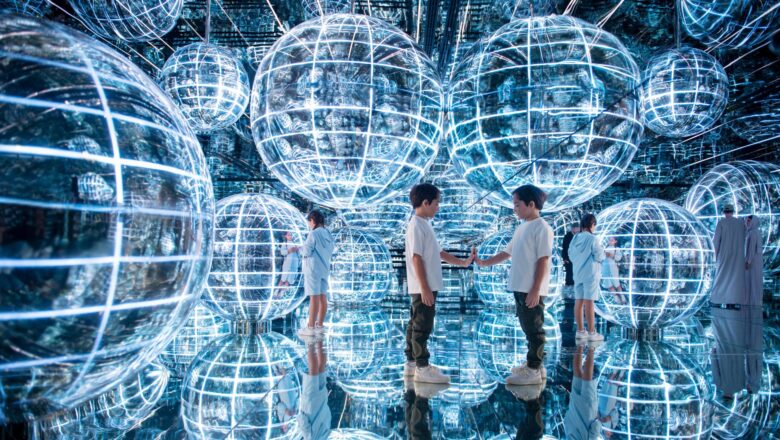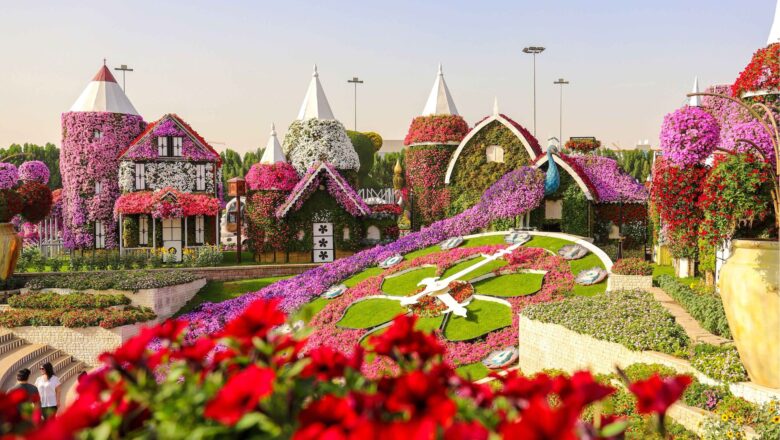The Museum of the Future in Dubai reimagines what a museum can be, science, design and storytelling to immerse visitors in possible futures for humanity and earth. More than a gallery the museum is an experience that invites guests to engage all 5 senses, explore near future technologies and consider innovative solutions to global challenges. This guide explains how to book tickets and timed entry, what to expect across the floors dedicated to different themes, the opening hours and “future timings” and the story behind the torus shaped building wrapped in Arabic calligraphy on Sheikh Zayed Road.
Built by the Dubai Future Foundation to connect policy, research and public imagination the museum uses interactive exhibits, immersive theatre and sensory rooms to help visitors create, question and experiment. Whether planning a family visit with kids, a professional field trip for innovators or a photography stop near Emirates Towers and the Trade Centre area this comprehensive resource covers details, insights and practical tips to make the most of a visit to the Museum of the Future.
What Is the Museum of the Future?
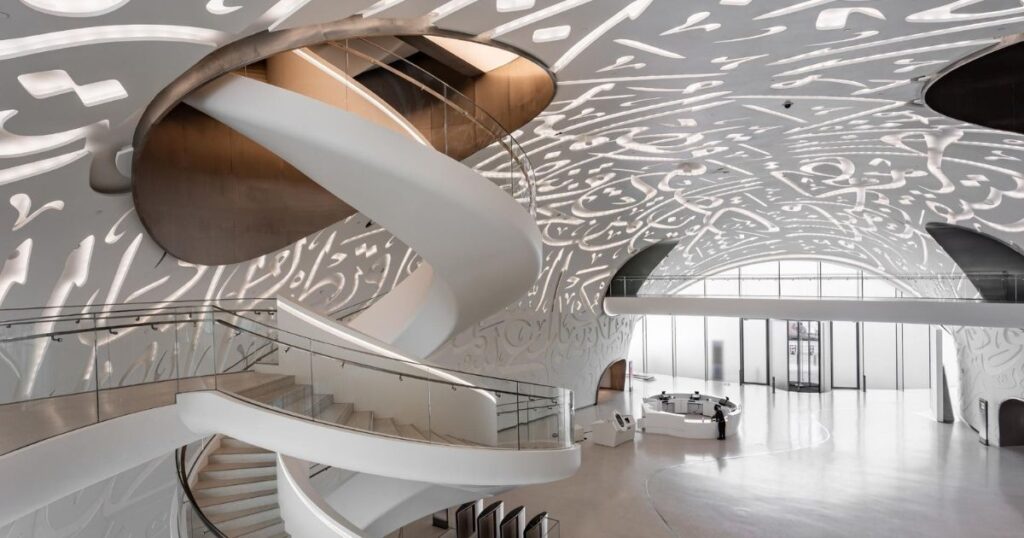
Vision and Purpose: Merging Science, Design and Hope
The Museum of the Future is a living platform that aims to merge science, technology, spirituality and art to inspire action in the present. The museum’s core proposition is simple yet profound: invite visitors to experience tomorrow today, then equip them with knowledge and tools to shape the world they want to live in. By situating complex themes like climate change, energy transitions, health and space exploration within narrative rich environments the museum transforms abstract ideas into tangible, participatory experiences that spark creativity and collective agency.
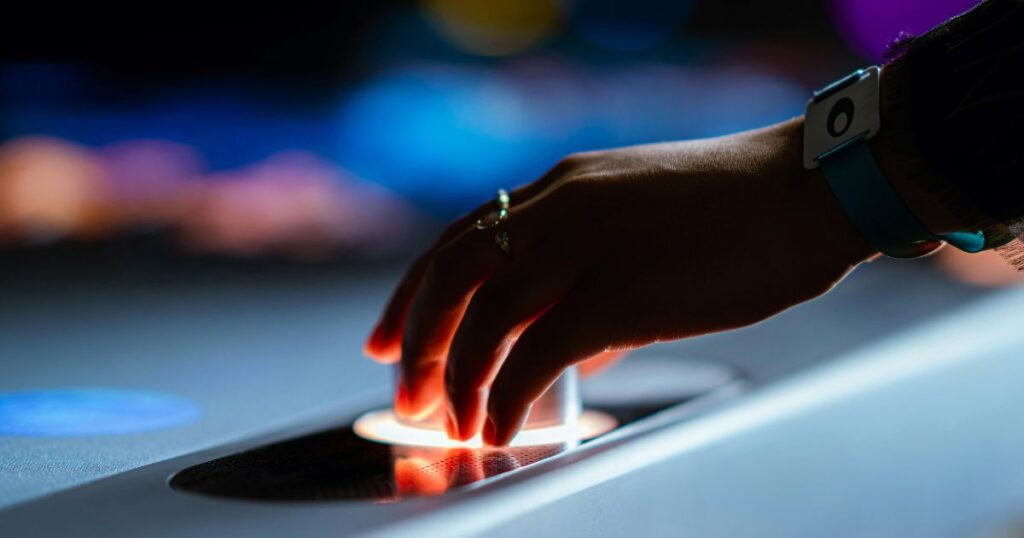
Leadership and Origins: From Vision to Building
Conceived as part of Dubai’s larger “future Dubai” strategy and unveiled alongside the World Government Summit the museum sits under the umbrella of the Dubai Future Foundation. It aligns with national ambitions articulated by the UAE’s leadership—including the UAE Vice President and Prime Minister—to accelerate innovation, attract global talent and test solutions to societal challenges in real contexts. The institution functions as both an exhibition space and a bridge to accelerators, policy labs and research initiatives across the region and beyond.
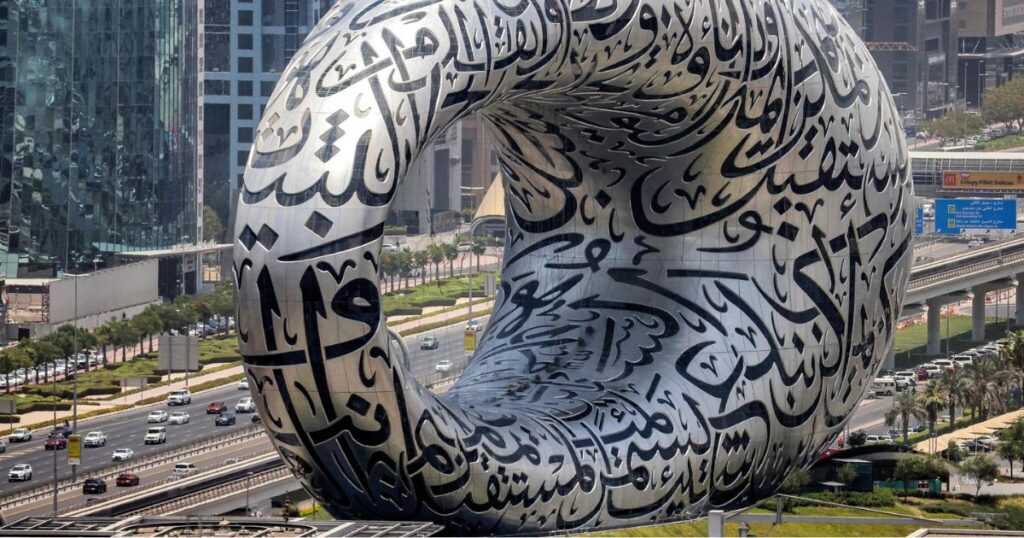
Why It’s Not a Traditional Museum
Traditional museums preserve the past; this museum prototypes the future. Instead of static displays it offers immersive exhibits, collaborative labs and guided scenarios with active roles for visitors. “Tomorrow Today” rotates cutting-edge prototypes and case studies, while other floors use cinematic storytelling to explore near-term breakthroughs. The result is a hybrid between a museum, an innovation lab and an immersive theatre designed to help visitors imagine, test and iterate on possible futures.
Location, Access and Parking: How to Get There
Exact Location and Landmarks
- Address: Sheikh Zayed Road (E11), next to Emirates Towers, in Dubai’s Trade Centre area.
- Landmark: An iconic torus shaped building wrapped in flowing Arabic calligraphy that glows at night—impossible to miss when driving along SZR.
Getting There: Metro, Taxi and Driving
- Metro: Emirates Towers Metro Station (Red Line) is the closest stop. A pedestrian connection leads towards the museum area.
- Taxi/Ride-hailing: Set drop-off as “Museum of the Future” or “Emirates Towers”. Signage routes guests to the main entrance.
- Driving: On-site and overflow parking is limited during peak hours. Arrive early or consider park-and-ride via metro to streamline arrival.
Best Time to Visit and “Future Timings”
- Opening hours are typically mid-morning to early evening, with last entry in late afternoon. Exact future timings can change for special programs.
- For fewer crowds choose weekday mornings or later afternoon slots; photographers often prefer late golden hour into dusk for exterior shots.
Future Architecture: Inside the Torus Shaped Building with Arabic Calligraphy
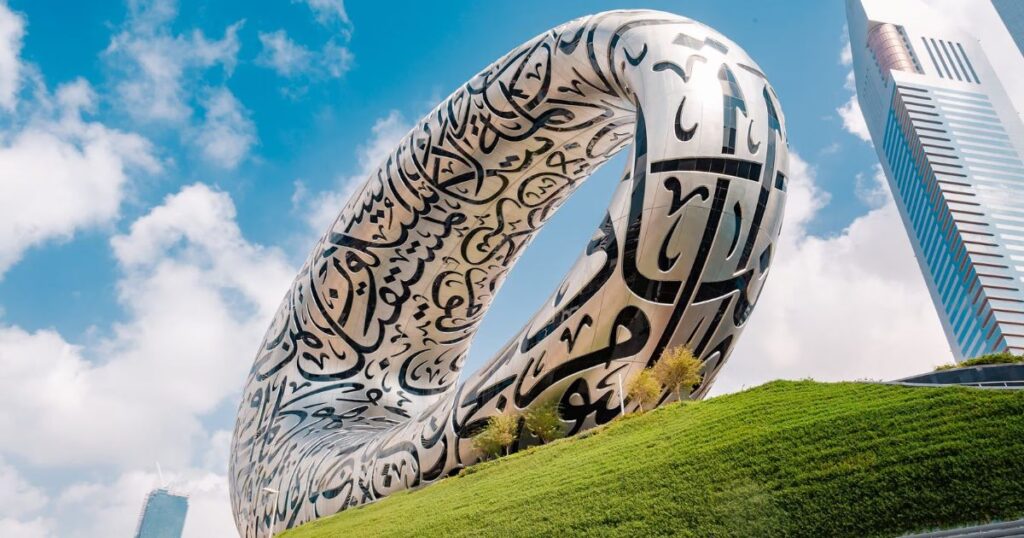
Design Story and Sustainability
The Museum of the Future embodies future architecture: parametric design, digital fabrication and smart building systems. The torus symbolizes continuity while the central void represents the unknown—the ideas yet to be imagined. Integrated systems reduce energy loads while the facade acts as a programmable skin, modulating light and shadow. The design reflects an ethos of adaptable, low-carbon building strategies aligned with Dubai’s sustainability goals.
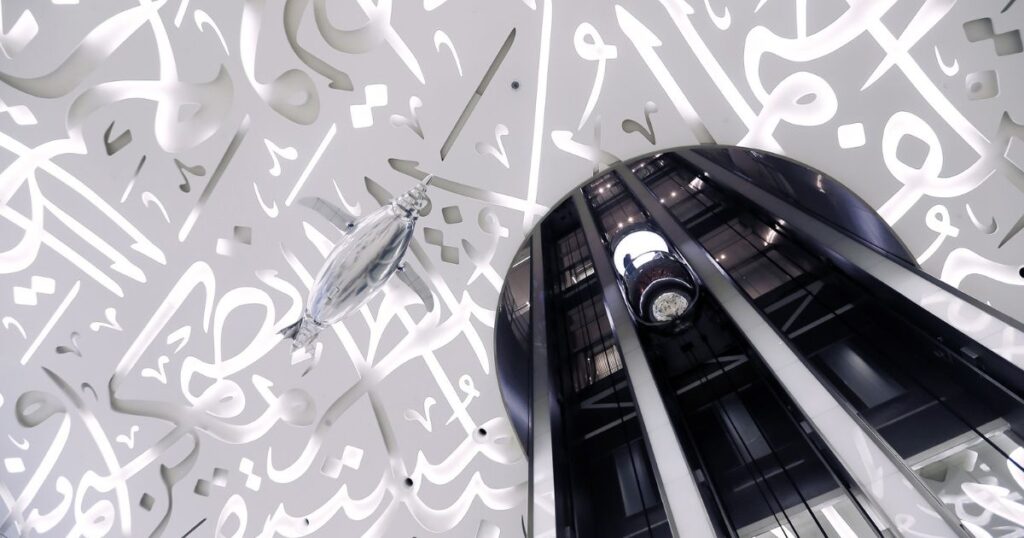
Arabic Calligraphy: Three Quotes to Know
The facade displays three quotes attributed to His Highness Sheikh Mohammed bin Rashid Al Maktoum in Arabic calligraphy that doubles as windows:
- “The future belongs to those who can imagine it, design it and execute it.”
- “We won’t live for hundreds of years but we can create something that will last for hundreds of years.”
- “The secret of the renewal of life, the development of civilization and the progress of humanity is in one word: innovation.”
By day visitors can see the calligraphy cut through the steel panels; by night the script illuminates, creating one of Dubai’s most photogenic skylines.
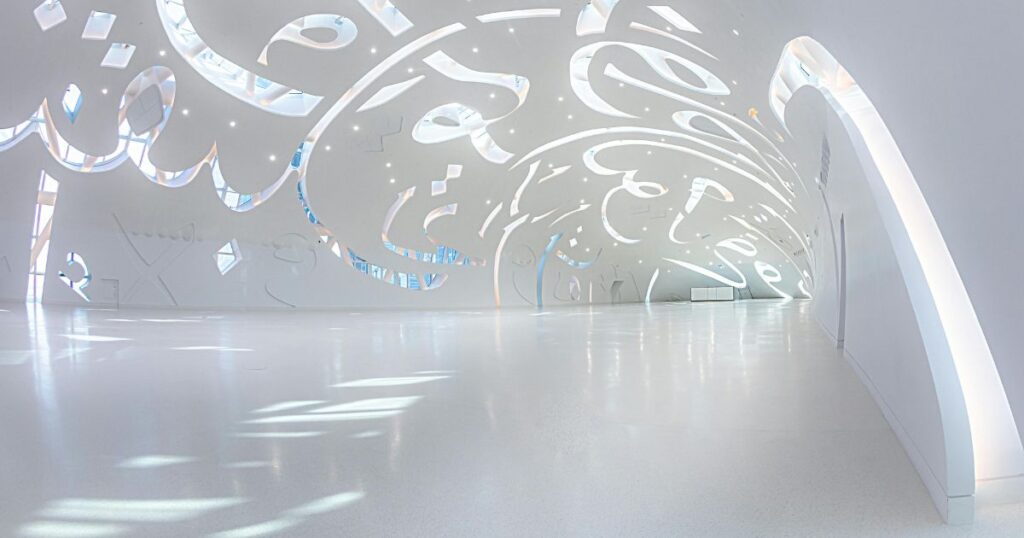
Engineering Details and Materials
The building’s envelope uses a diagrid steel frame with BIM-driven coordination and CNC-fabricated panels for precision. The calligraphy cutouts integrate glass-reinforced panels and high-performance glazing. This demonstrates how computational design and off-site manufacturing can reduce waste and accelerate complex construction—an architectural case study in engineering for possible futures.
Floors Dedicated to Different Themes: What to Expect on Each Floor
While exhibits evolve the museum typically organizes experiences across multiple themed levels. Expect three signature immersive floors plus rotating innovation galleries and a children’s zone.
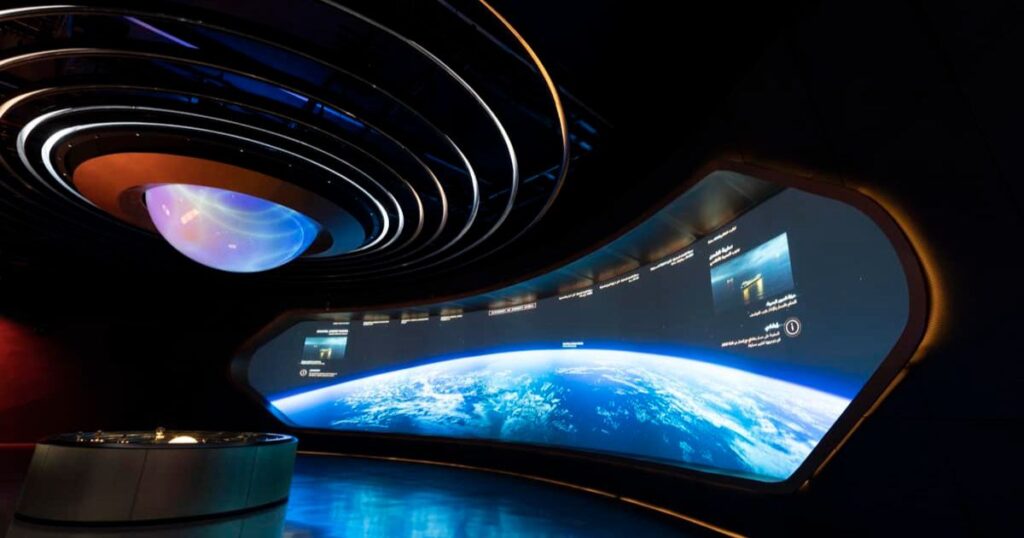
Journey to the Future — Space Exploration and Outer Space Resource Development
This cinematic sequence transforms guests into mission participants, simulating a launch and rendezvous with an orbital station. Exhibits explore how space exploration informs everyday life—satellite-enabled agriculture, disaster response, precision navigation—and examine outer space resource development, from lunar regolith construction to asteroid-derived metals. Scenarios foreground energy, closed-loop life support and planetary protection protocols, asking visitors to weigh benefits and risks as humanity extends beyond earth.
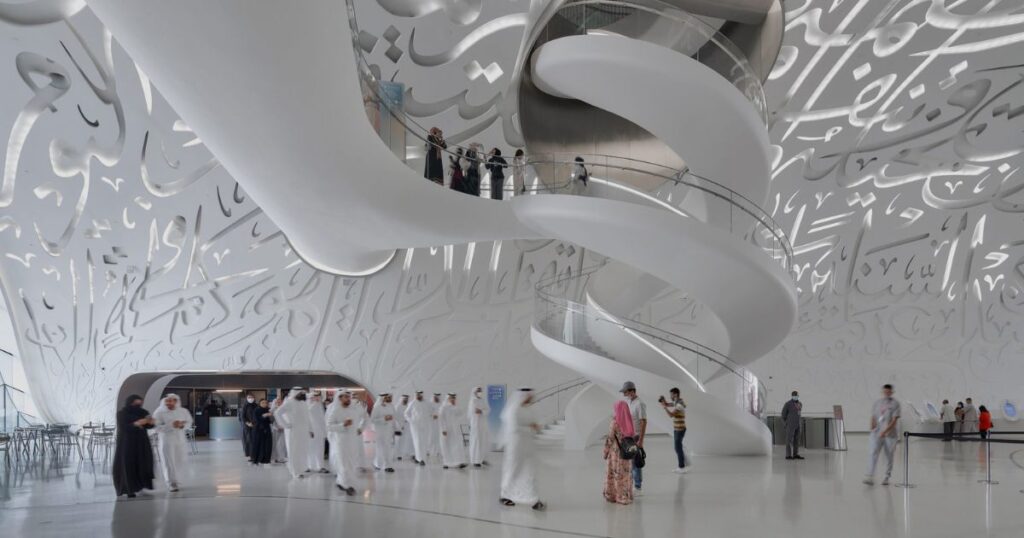
HEAL Institute — Climate Change, Biodiversity and Earth Systems
HEAL (a nod to “Health, Ecology and Life”) puts climate change at the centre of a data-rich, hopeful exploration of earth systems. Interactive models simulate reforestation corridors, coral reef restoration and urban microclimate cooling. Exhibits highlight artificial intelligence in conservation (e.g. acoustic monitoring, drone-supported rewilding), nature-positive agriculture and circular economy strategies. Guests test trade-offs among energy use, land use and biodiversity, learning how local actions compound into global outcomes.
Al Waha — A Sensory Room to Engage All 5 Senses
Al Waha is a mindful, screen-light retreat that engages touch, sound, scent and movement. Spaces invite slow breathing, haptic exploration and meditative focus, foregrounding mental wellbeing and the spirituality of presence. Designed with accessibility in mind these galleries function as a sensory room for guests who benefit from calmer, less stimulating environments—an important inclusion in a high-tech museum.
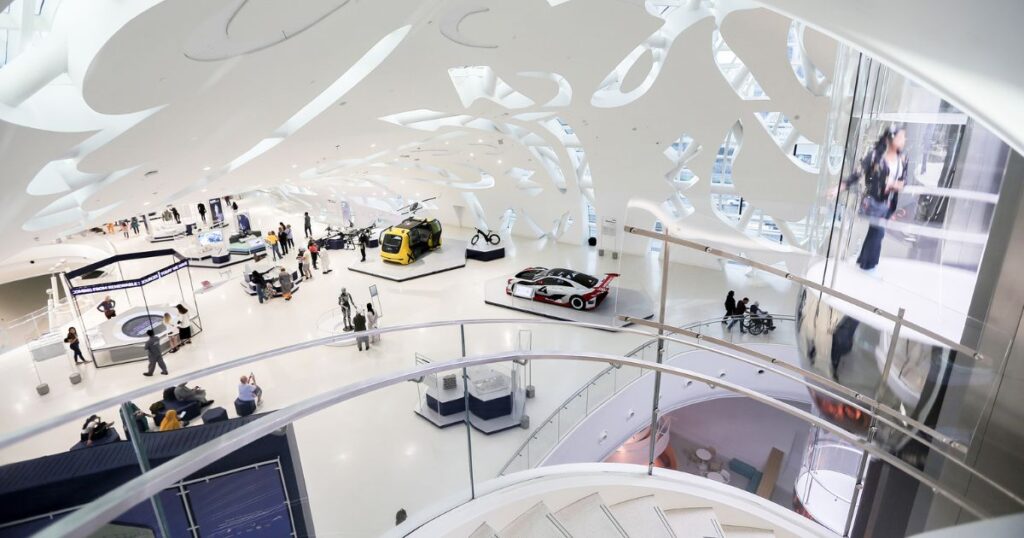
Tomorrow Today — Near Future Technologies Shaping Life, Health and Transportation
This rotating showcase curates near future technologies with real-world pilots: AI-powered diagnostics and preventive health, human augmentation and advanced prosthetics, energy storage innovations, smart mobility and transportation systems, climate-adaptive materials and robotics for public services. Each case study includes information on readiness levels, ethical implications and deployment pathways so visitors can see how an idea travels from lab to city street.
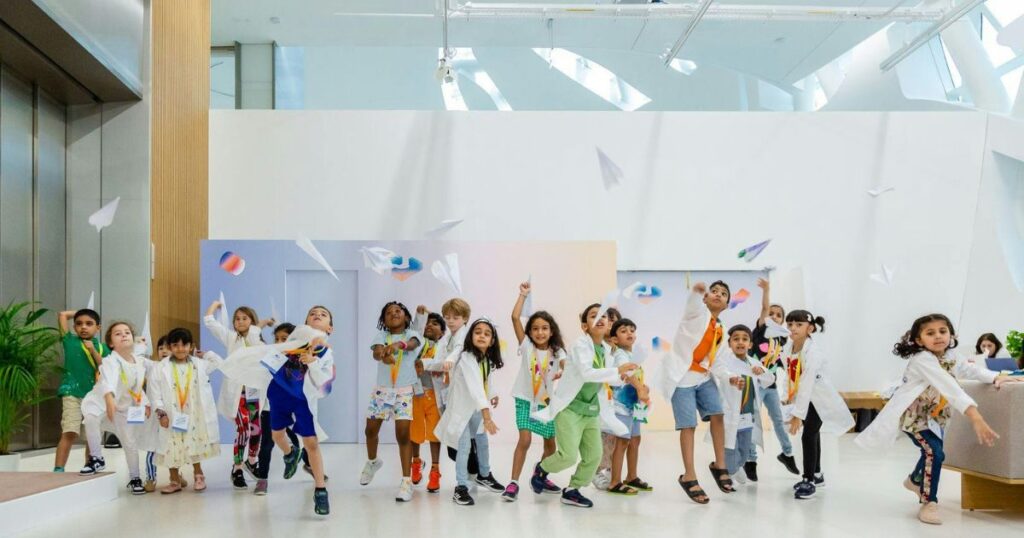
Future Heroes — A Children’s Zone for Creativity and Collaboration
Future Heroes is purpose-built for children with role-play missions, creative “maker” tasks and teamwork challenges that encourage problem-solving and empathy. Facilitators support different learning styles and age ranges with sensory-friendly elements and clear safety protocols. The goal is to help children explore and create with confidence and curiosity.
Tickets, Prices and Timed Entry — How to Book Museum of the Future
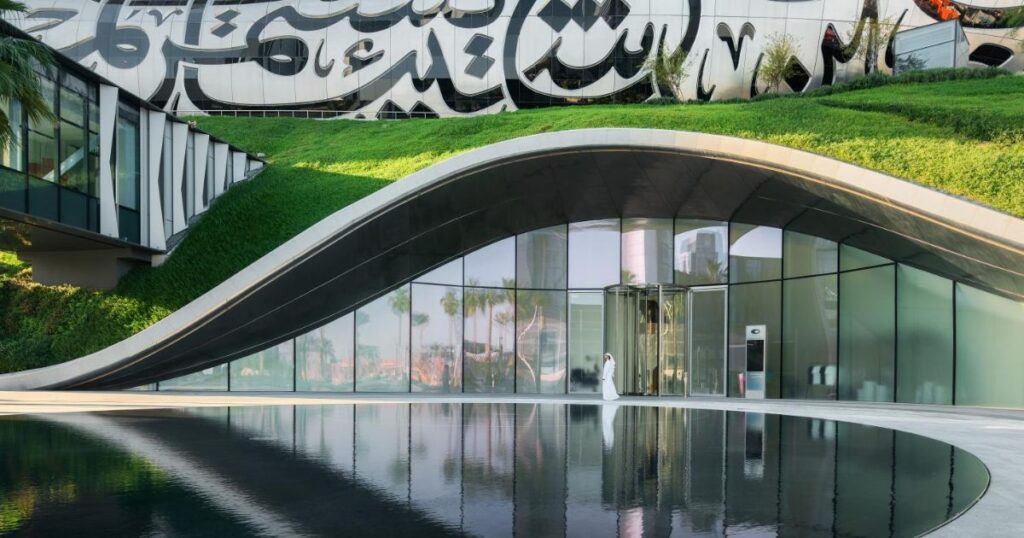
How to Book Tickets (and Why to Book Early)
- Book tickets online through the official site to secure timed entry slots especially during holidays and major events.
- Popular days can sell out; consider booking “future tickets” several days or weeks in advance during peak seasons.
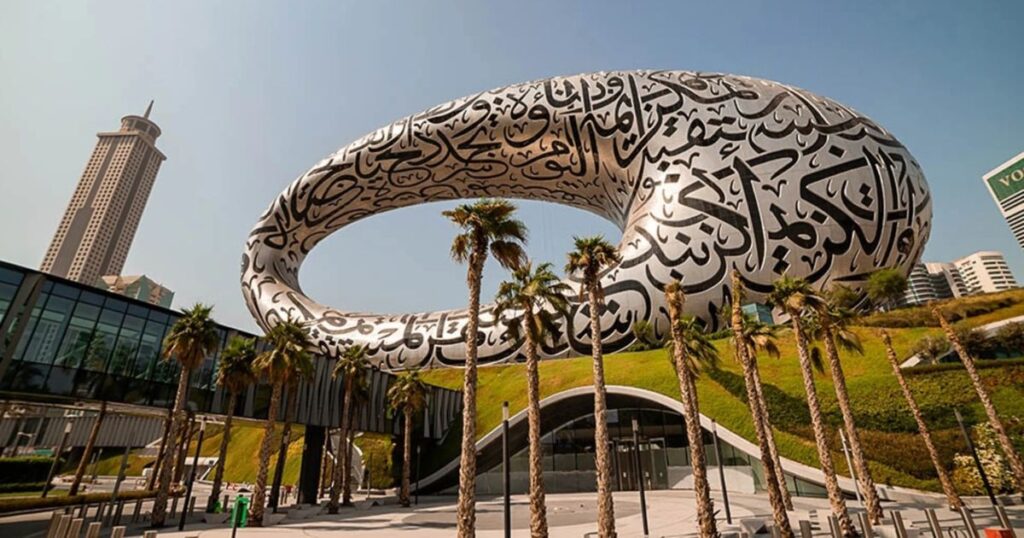
Ticket Types and Passes
- Standard Entry: Timed entry for general visitors.
- Children: Policies often include free entry for very young visitors; check age thresholds.
- Groups and Schools: Dedicated booking channels for educational visits and large parties.
- Premium or “Pioneer Pass”: Occasionally available offering priority access or add-ons; availability varies.
Typical Prices and Discounts
- Adult tickets usually start from AED 149–175, with concessions for children, seniors and sometimes residents. Prices and offers can change; always check the official website before booking.
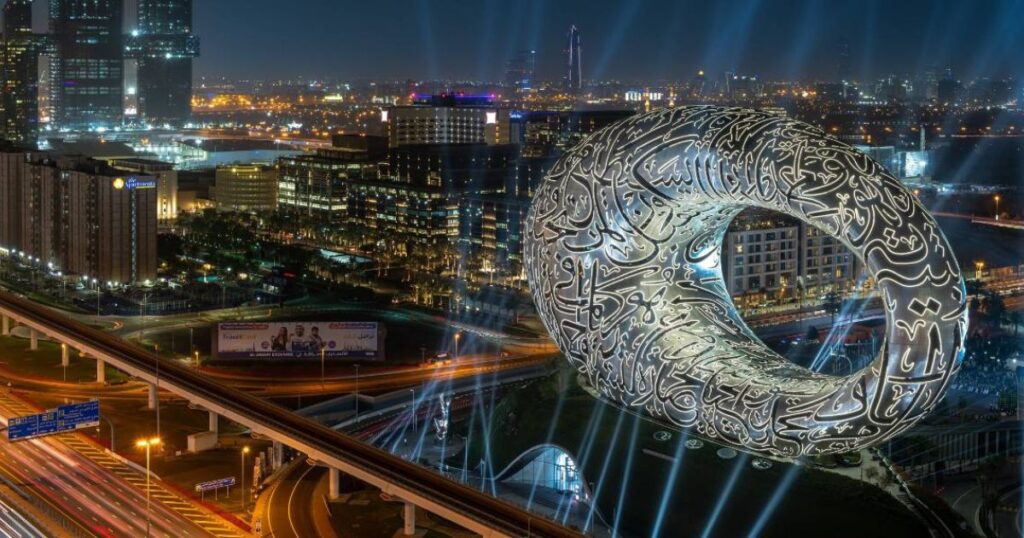
How Timed Entry Works
- Timed entry means arriving in a specified time slot; expect a short buffer time.
- Average visit takes 2-3 hours. Families with children often prefer morning slots, while photographers prefer late-day entries for sunset and night exteriors.
Refunds and Changes
Rescheduling is sometimes possible up to a cut off time before entry. Check terms during checkout and consider travel insurance or flexible dates if plans may change.
Opening Hours and Best Times to Visit
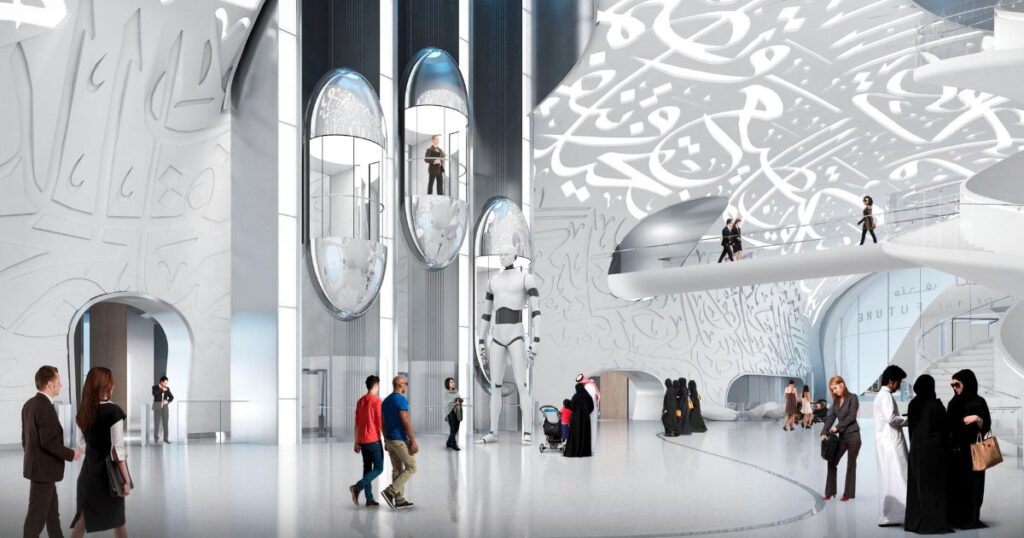
Standard Opening Hours
- Typical opening hours: approximately 10:00–19:00, with last entry late afternoon. These future timings may change for special programming or holidays—check the official site.
Crowd Patterns and Visit Duration
- Quiet times: Weekday mornings and late afternoons.
- Busy times: Weekends, school holidays and dates near the World Government Summit.
- Time on-site: Plan 2-3 hours for a full experience; an express route can be done in about 90 minutes.
What to Expect Inside — Engaging All Five Senses
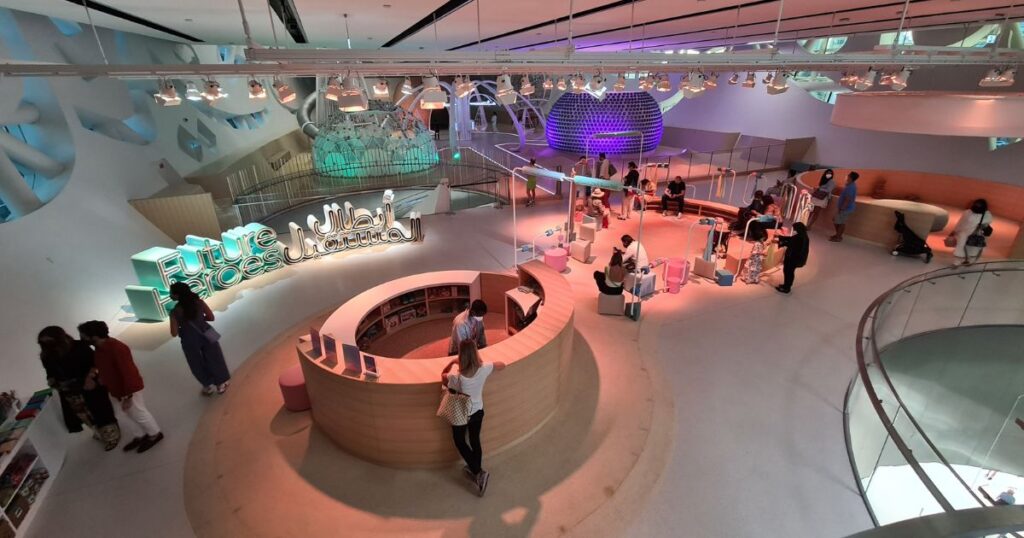
Immersive Exhibits and Theatre Moments
Expect immersive theatre sequences that combine narration, projection, audio design and motion cues to create presence. The “launch” sequence, HEAL’s ecological data landscapes and multi-sensory rooms are highlights. Photographers note that some spaces are low light; fast lenses and steady hands help.
Interactive Stations and Hands-On Learning
Hands-on stations allow visitors to experiment, vote on pathways and co-create with others. These design choices aim to shift visitors from passive observers to active participants, increasing knowledge retention and engagement for all ages.
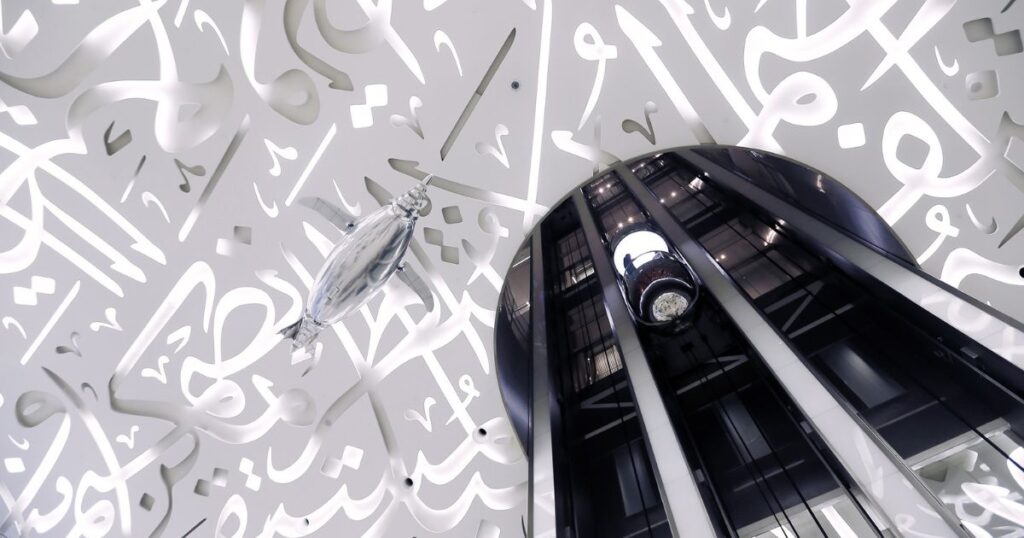
Accessibility and Inclusivity
The museum has elevators, ramps and staff trained to assist. Exhibits and signage are in Arabic and English with visual cues for key instructions. Quiet areas and sensory-friendly elements are available; guests with specific needs can contact the museum in advance for detailed arrangements.
Programs, Talks and Events Connected to the World Government Summit
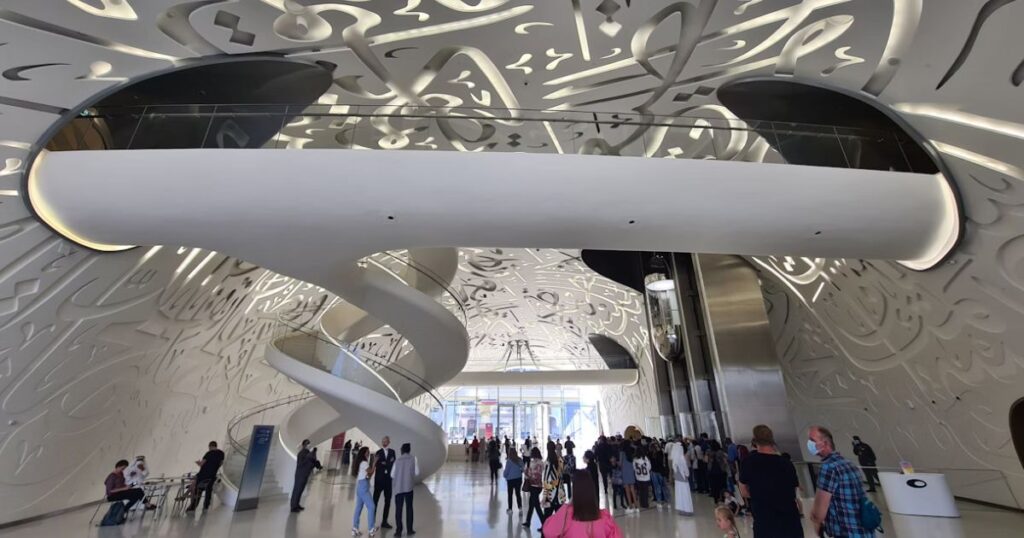
Special Exhibitions and Rotating Showcases
Pop-up installations and rotating showcases often tie in with global challenges discussed at the World Government Summit, featuring collaborations with universities, labs and startups. These exhibitions translate policy themes into visitor-friendly, data-driven displays.
Public Programs and Workshops
Public talks, family workshops and guided tours break down complex topics like AI ethics, climate adaptation and space governance. Programs are designed to bridge academic insights with everyday life, so visitors can take ideas home and to the workplace.Beyond the museum, the Dubai Future Foundation runs accelerators, living labs and foresight programs that pilot innovative solutions in the city. The museum is the public interface to this ecosystem, connecting visitors with ways to learn more, contribute projects or partner on pilots.
For Educators, Students and Families
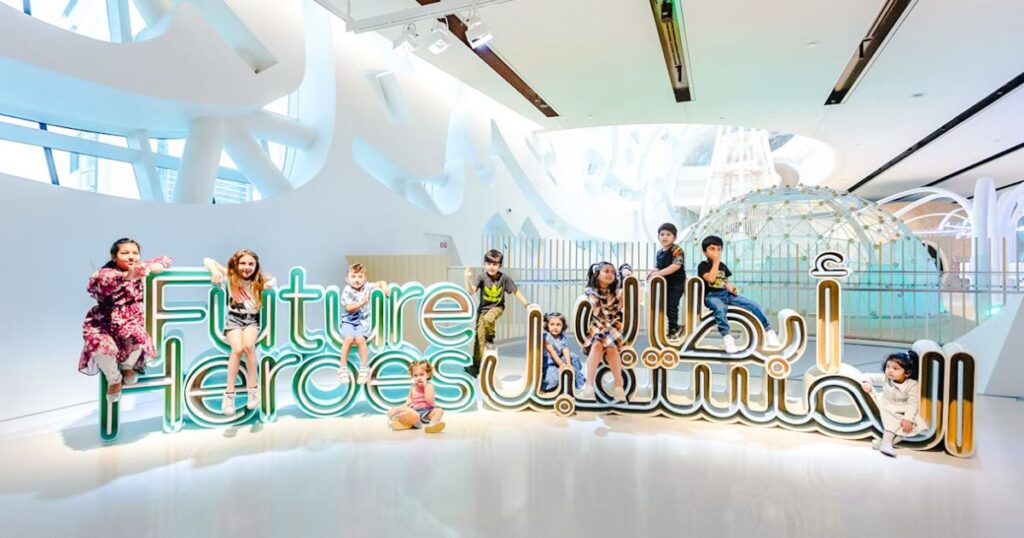
Learning Objectives and Curriculum Links
- STEM: Systems thinking, scientific method, data literacy.
- Sustainability: Climate, biodiversity, circular economy.
- Creativity: Design thinking, prototyping, collaborative problem-solving.
- Future Skills: Ethical reasoning, digital fluency, civic imagination.
School Visit Planning
- Group booking: Book well in advance; align timed entry with bus schedules.
- Age considerations: Tailor routes—Future Heroes for younger children; Tomorrow Today for secondary and university-level students.
- Chaperone tips: Divide into small groups, set clear meeting points and pre-brief on etiquette.
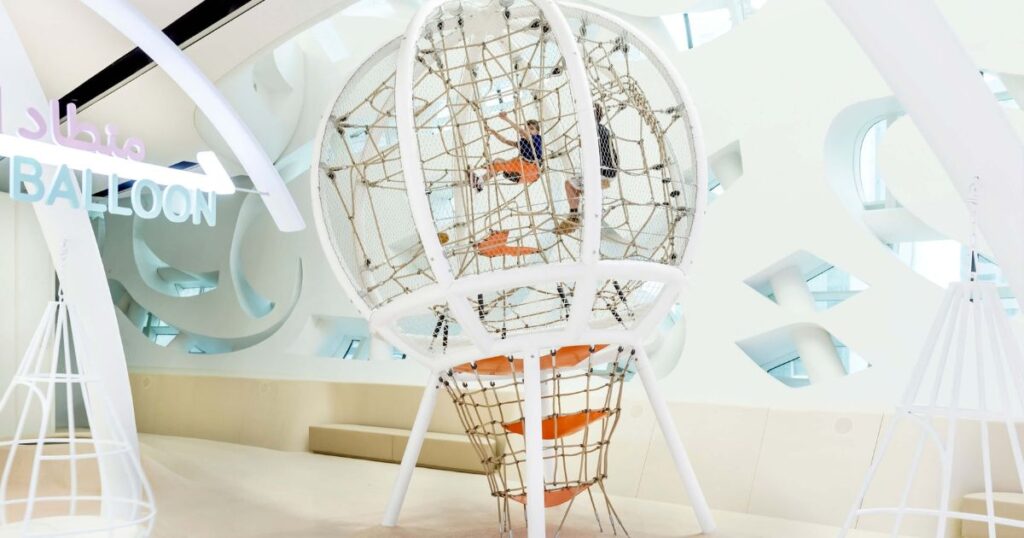
Helping Children Engage
- Pre-visit: Introduce themes (space, health, energy) with short videos or reading.
- On-site: Provide a scavenger list (e.g. “find the human augmentation prototype”).
- Post-visit: Assign reflection prompts—What challenge did you care most about? What innovation would you test in your community?
For Innovators and Professionals — AI, Human Augmentation and More
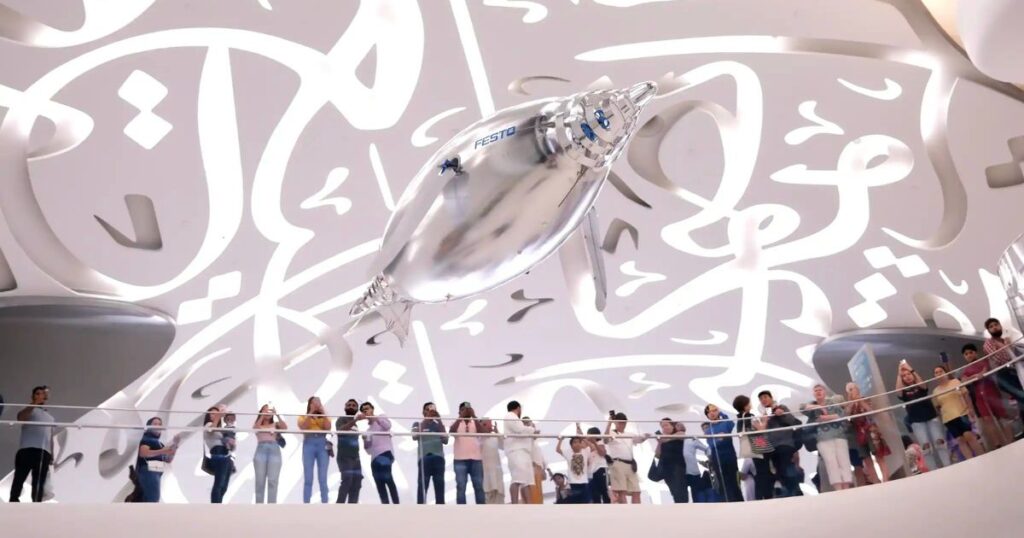
Artificial Intelligence Across Exhibits
Exhibits show AI’s role in predictive health, energy optimization and transportation routing. Case studies discuss bias, transparency and accountability, and the value of robust data and human-centred design in algorithmic systems.
Human Augmentation and the Future of Work
From advanced prosthetics to cognitive assistive tools, human augmentation is framed as both a capability boost and an ethical frontier. Scenarios explore accessibility, safety and equitable access, and encourage professionals to design inclusively from the start.
Turning Ideas into Action
Visitors can submit proposals, join accelerator challenges or connect with policy labs that test ideas in real urban environments. Pathways focus on responsible deployment, measurable impact and community engagement.
Practical Details — Facilities, Food, Photography and Etiquette
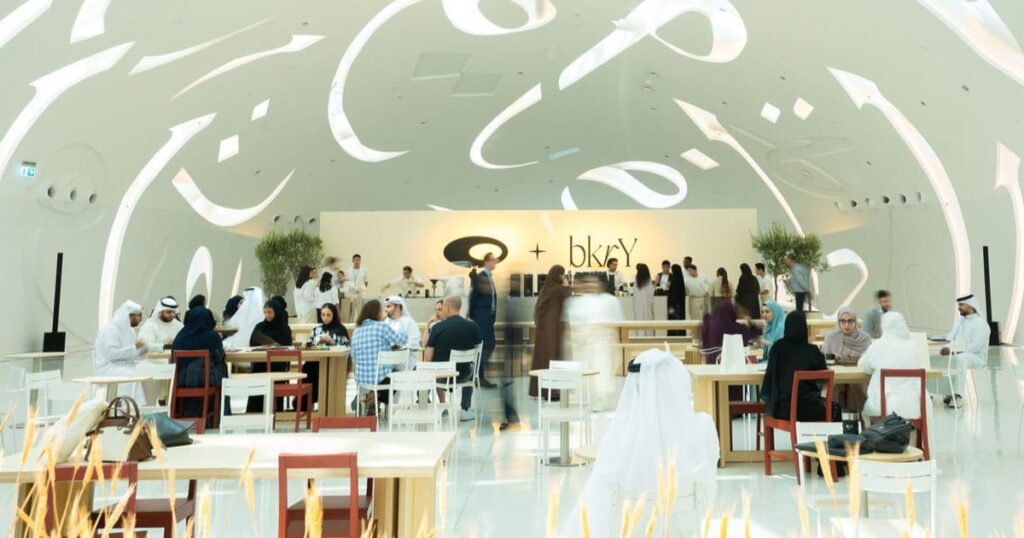
Facilities and Amenities
- Wi-Fi, lockers, restrooms, nursing rooms and prayer rooms are available.
- A gift shop sells books and maker kits to extend learning beyond the visit.
- On-site cafés and nearby restaurants at Emirates Towers, DIFC and the Trade Centre area offer options for all budgets. Consider early or late dining to avoid peak hours.
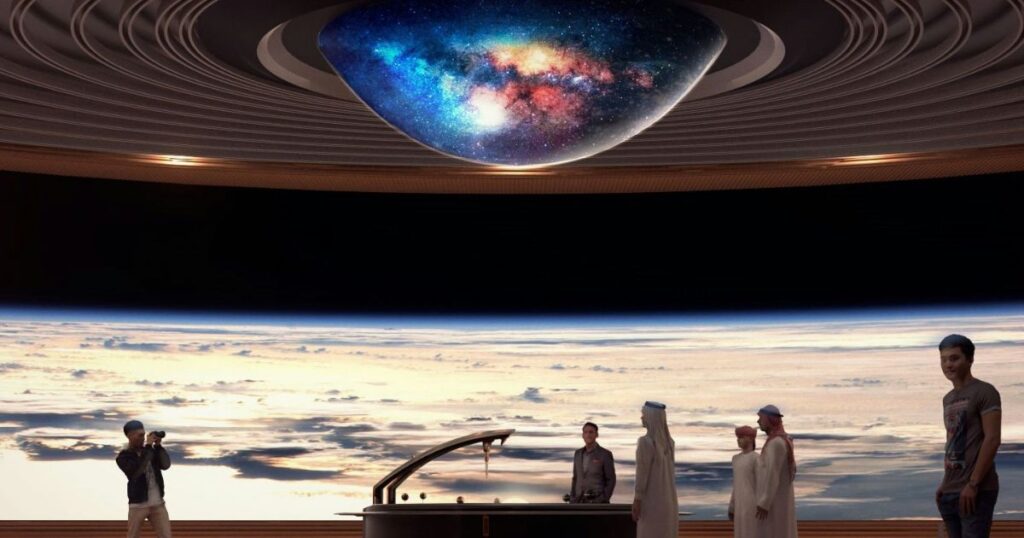
Photography and Filming
- Handheld photography is usually allowed except in designated areas. Be mindful of tripods. Respect privacy and don’t block pathways during immersive moments.
Dress Code and Cultural Awareness
- Comfortable and respectful attire is recommended. The museum welcomes visitors from many cultures and ages; considerate behaviour enhances the experience for everyone.
Responsible Futures — Ethics, Climate and Society
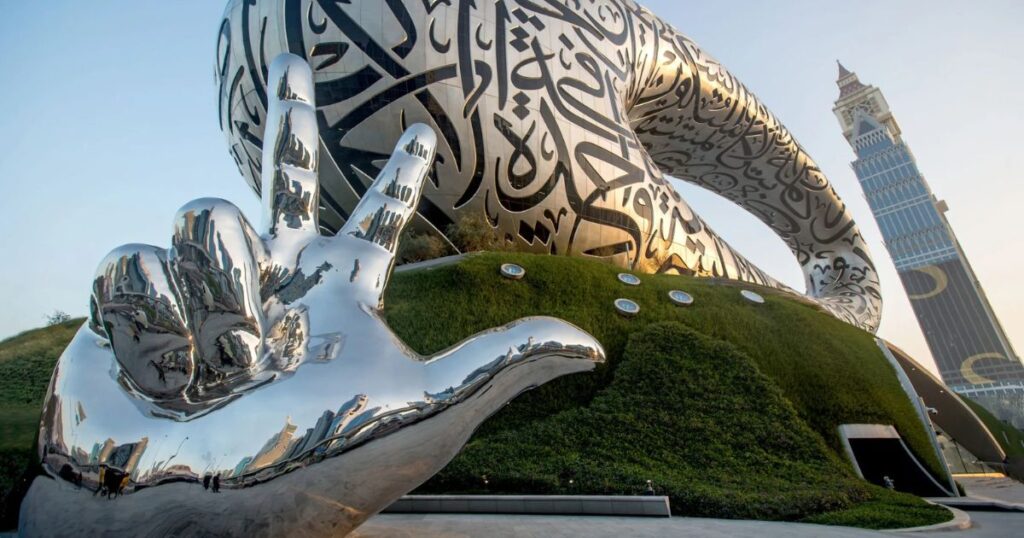
Climate Change and Energy Transition
Exhibits encourage balanced decision-making on energy security, emissions reduction and biodiversity. Models show how efficiency, renewables and storage must be paired with demand-side management and resilient infrastructure.
Health and Wellbeing
Preventive health, early diagnostics and equitable access are recurring themes. Displays highlight responsible data stewardship, privacy and the importance of human oversight in AI-supported health systems.
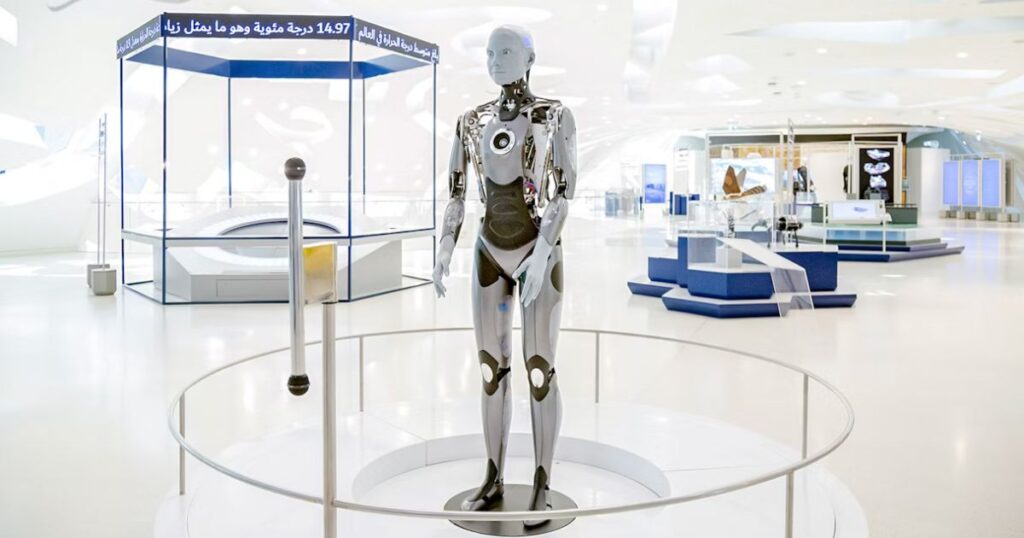
Transportation and Cities
Urban stories showcase multimodal transportation, walkable districts and clean fleets. Case studies ask visitors to imagine cities where technology improves life without sacrificing community or nature.
Culture, Spirituality and Hope
By integrating spirituality and art into science storytelling, the museum puts hope front and centre—reminding visitors that the future is a choice shaped by values as much as by technology.
Planning Checklist — Book Tickets, Timing and What to Bring
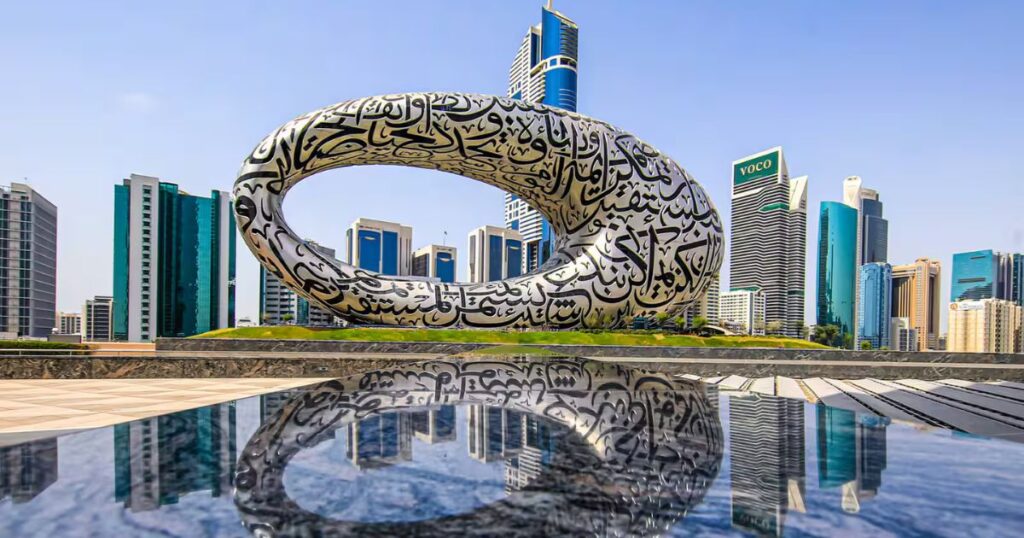
- Before you go:
- Book tickets and timed entry online; note your time and future timings.
- Check opening hours and any planned closures.
- Choose transport (metro via Emirates Towers, taxi, or driving/parking).
- What to bring:
- ID, comfi shoes, water bottle, camera/phone.
- Light jacket—some exhibits are cool for equipment reasons.
- On the day:
- Arrive 15–20 minutes early to clear entry.
- Start at the top floor and work your way down to avoid backtracking.
- Leave time for the gift shop to extend your visit.
- With kids:
- Prioritise Future Heroes and schedule breaks in sensory room areas like Al Waha.
- Accessibility notes:
- Elevators and ramps are available; contact the museum for specific requirements.
Quick Facts and FAQs
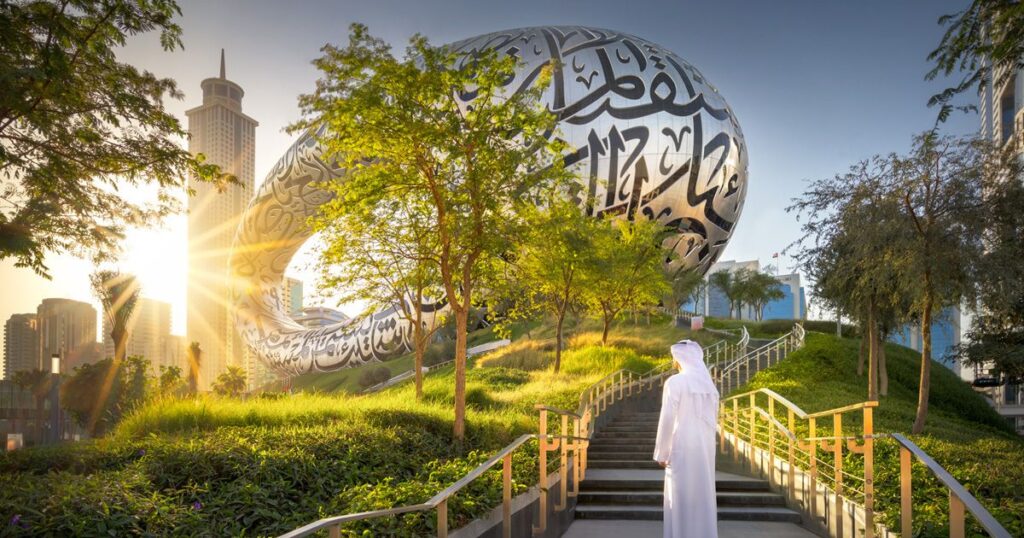
Snippets
| Category | Details |
| Location | Sheikh Zayed Road, next to Emirates Towers, Trade Centre |
| Architecture | Torus shaped building with Arabic calligraphy (three quotes) |
| Themes | Space exploration, climate and biodiversity (HEAL Institute), wellbeing (Al Waha), near future technologies (Tomorrow Today), children’s zone (Future Heroes) |
| Floors | Multiple levels; three immersive “signature” floors plus rotating galleries and a kids’ floor |
| Visit Time | 2–3 hours typical; 90 minutes possible |
| Tickets | Timed entry; book tickets online; pricing varies; Pioneer Pass may appear seasonally |
| Best For | Families, educators, innovators, architects, photographers |
| Accessibility | Elevators, ramps, sensory-friendly options, multilingual signage |
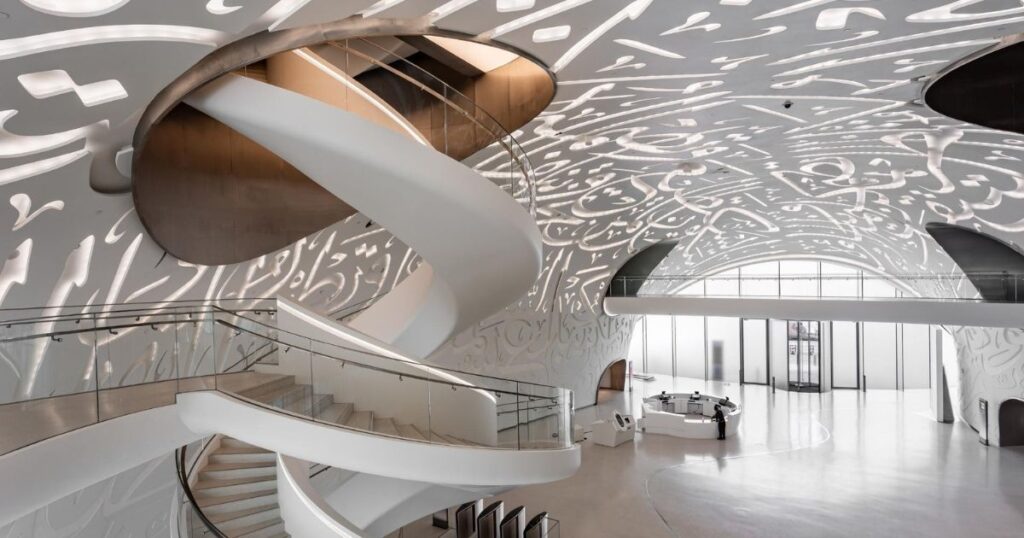
FAQs
- Can I buy tickets on-site?
- Limited on-site availability; book online in advance to secure timed entry.
- Are there guided tours?
- Occasional guided programs and workshops; check events page.
- Is there a sensory room for neurodivergent visitors?
- Al Waha has sensory-friendly spaces; contact guest services for quiet times.
- Is the museum suitable for toddlers?
- Yes, with supervision; Future Heroes has age-appropriate activities.
- Are exhibits in Arabic and English?
- Core content is both; staff can help with additional guidance.
- Can I re-enter with timed entry?
- Policies vary; assume single entry unless your pass says otherwise.
- Can I attend World Government Summit events?
- Public events around the summit; check museum and summit websites.
- Is there a dress code?
- Comfy, respectful clothing for all ages.
- Is parking free?
- Parking varies by time and event; metro is usually the easiest.
Links
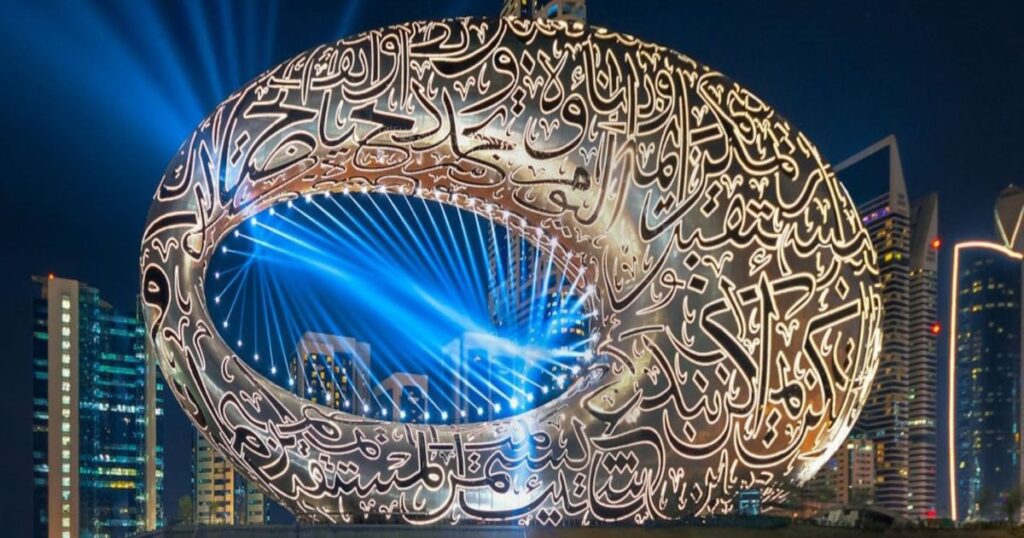
- Official website: https://museumofthefuture.ae
- Dubai Future Foundation: https://www.dubaifuture.ae/
- World Government Summit: https://www.worldgovernmentsummit.org
- Climate and biodiversity science (IPCC): https://www.ipcc.ch
- Space exploration (NASA Artemis): https://www.nasa.gov/artemis
- AI ethics (OECD.AI): https://oecd.ai
Conclusion — Why You Must Visit the Museum of the Future
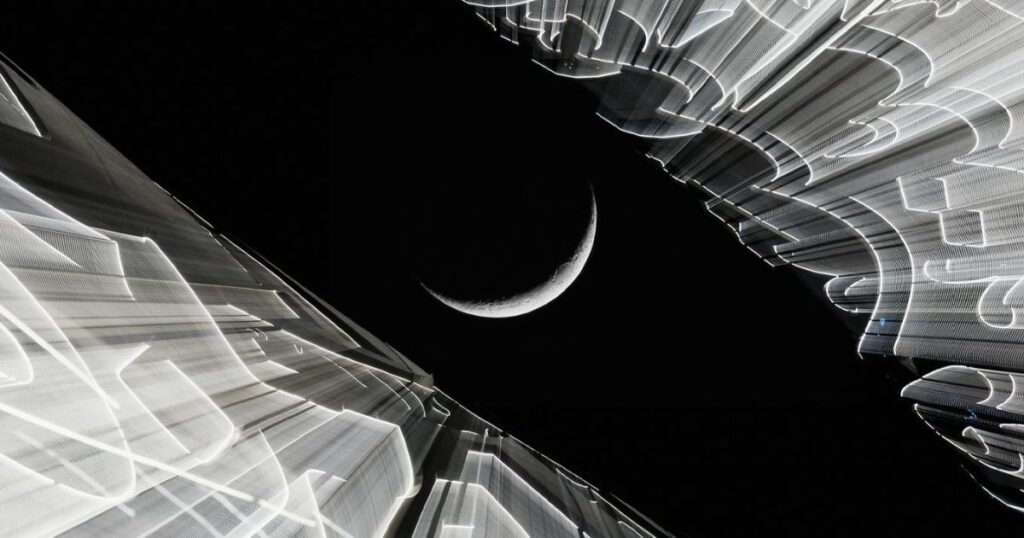
The Museum of the Future shows how a museum can be a learning space and a launchpad—where you engage, explore and create with technology to solve human and earth challenges. With interactive exhibits, immersive theatre and research-backed case studies on health, energy, transport and biodiversity, the museum asks you to think about possible futures and act with hope today. From the Arabic calligraphy on the torus shaped building to the floors on space, climate, wellbeing and near future tech, this is a landmark that reflects Dubai’s innovation focus.
Book your visit, check opening hours and allow 2-3 hours to see all three main floors plus Tomorrow Today and Future Heroes if you have kids. Whether inspired by the HEAL Institute, human augmentation prototypes or the story of outer space resource development, you’ll leave with ideas to test, knowledge to share and a sense that tomorrow is something to design today—at the Museum of the Future.

